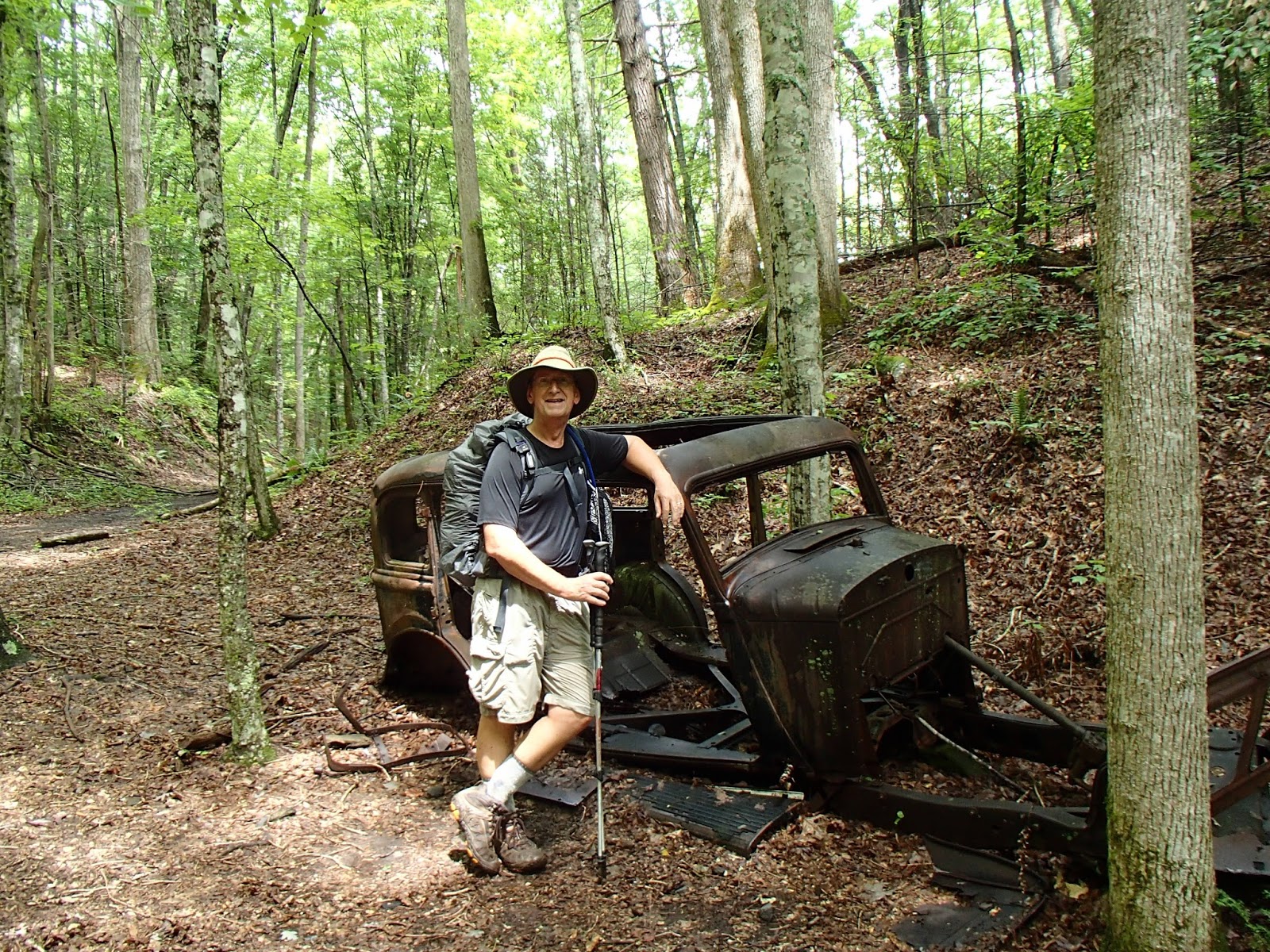I joined four others on a 20.6 mile hike on part of the Noland Divide Trail, the Noland Creek Trail, and a part of theSpringhouse Branch Trail. A long hike means an early start; we began with headlamps at 6:10 AM.
 |
| Trailhead sign illuminated by my headlamp. On to Noland Creek. |
We covered the 3.8 miles to the Noland Creek Trail fairly quickly, stopping only once to remove a layer as the day warmed with the sun. At this point the Noland Divide Trail generally follows the ridge line of the Noland Divide, another 7.8 miles to Deep Creek near Bryson City. The Noland Creek Trail follows Noland Creek, first its tributaries and then the creek itself.
 |
| Noland Creek Trail - 4.8 miles to Springhouse Creek Trail |
When you look at a trail map of the Great Smoky Mountains National Park, you notice that several trails follow and are named for divides and ridges or creeks. The main spine of the park is the long line of high peaks on the NC/TN border; the Appalachian Trail generally follows this undulating line for 74 miles from Fontana Dam to Davenport Gap. Several lateral ridges extend from this spine creating divides that separate large watersheds between the ridges.
The sound of Noland Creek grew louder as we descended on the well-graded trail. Soon, the trail followed an old roadbed, evidence that this area was once home to several farm settlements and later logging operations. Our gradual descent changed with a side hike up Springhouse Branch Trail. The trail climbs up Forney Ridge, and eventually descends to Forney Creek. We hiked the 2.8 miles up to Forney Ridge. Along the lower part of the trail we saw stone walls and fallen chimneys, all that remains of the homesites of the farm community that once supported several families.
 |
| Springhouse Branch Trail - it is steeper tun it looks here. |
 |
| Remnants of a stone wall. |
 |
| All that remains of a fireplace, evidence of a cabin. |
Frank, our hike organizer had information about the homesite of Cornelius Laws and some graves just off the trail. The remains of the chimney were easily seen, but the graves were not marked. Reportedly there are five Indian graves near the homesite. Using his dowsing rods, Frank located the graves not far from where they were reported to be. Dowsing showed two rows of graves, three in one and two in another. Were they Indian graves? Our compass showed them to be north-south oriented, which is consistent with Indian graves. White settlers were almost always buried east-west, with the headstone facing east.
 |
| The remains of the fireplace at the Laws home site. |
 |
| Frank dowsing for evidence of graves. You can make out the wire rods he is holding. They cross when held over a grave. |
After lunch at the Springhouse Branch/Forney Ridge trail junction we retraced the 2.8 miles back to Noland Creek and then continued 5.2 miles to the end of the trail. The trail ends close to where Noland Creek flows into the Tuckaseegee River near its confluence with Fontana Lake. We hiked back one mile to Lakeview Drive where we waited for the bus to pick us up and take us back to our cars near Clingmans Dome. Total time from when I left may car in the morning to the time I got back to it was just under 13 hours.
A day of bright sunny weather, good company, and the always beautiful and varied landscape of the Smokies.
Tale of the tape:
Total miles hiked: 20.6
New trail miles: 16.8
Total trail miles to date: 221.1



















